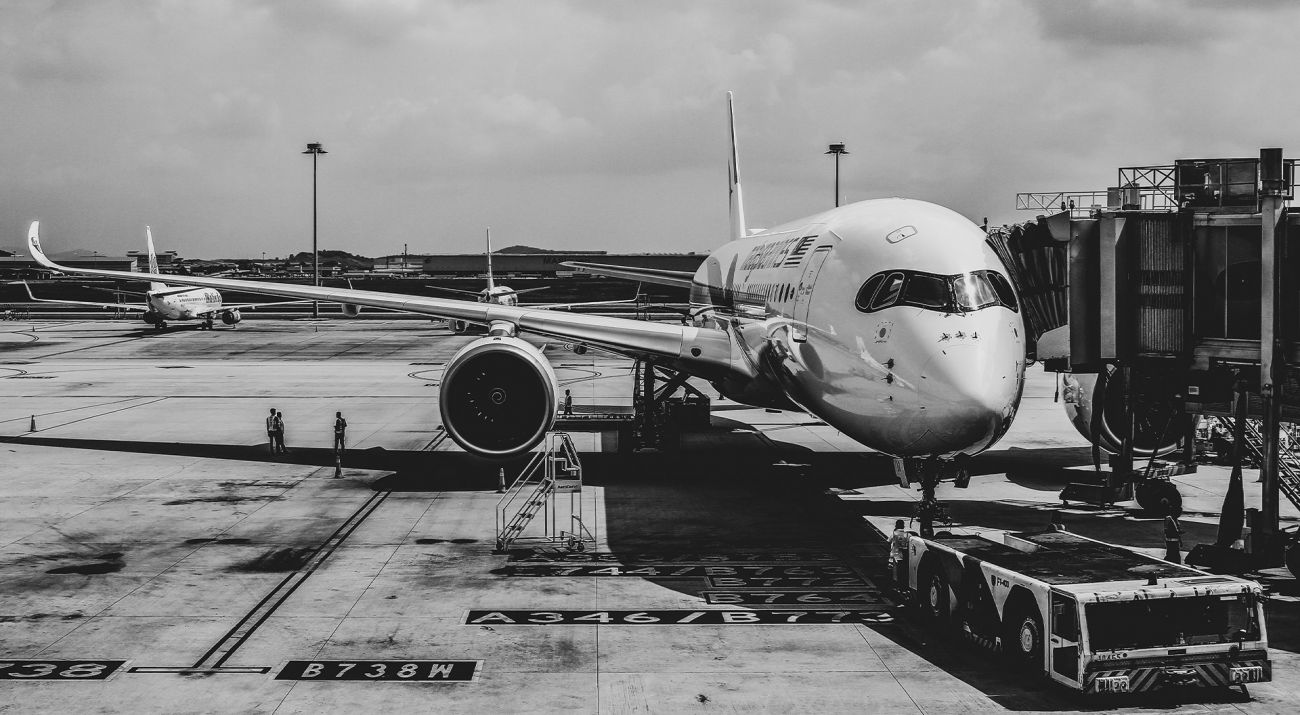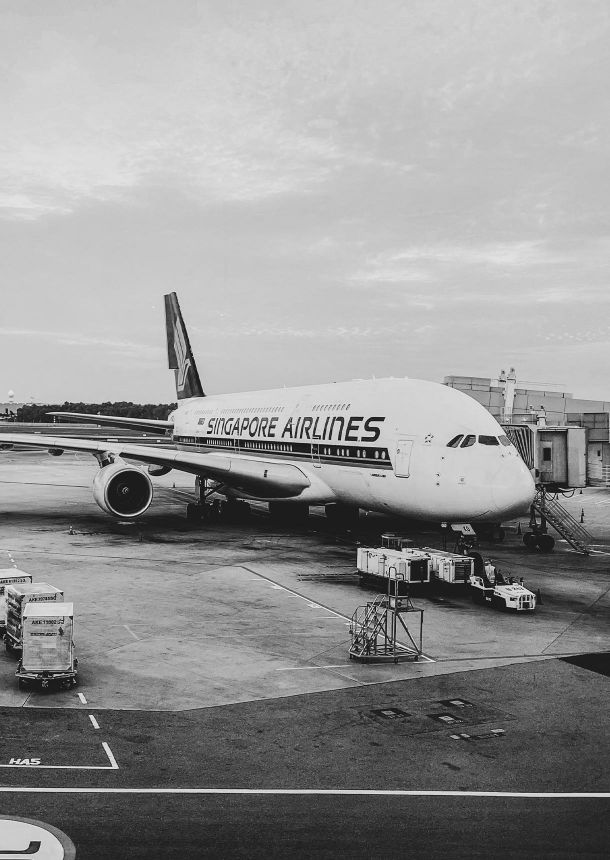Industries.


Airlines.
- Strategy
- Transformation
- Restructuring Support
- Operational Excellence
- Implementation Support
- Market & Customer Insights
- Marketing & Sales
- Pricing & Revenue Management
- Network & Fleet Management

Airports.
- Strategy
- Transformation
- Operational Excellence
- Implementation Support
- Market & Customer Insights
- Marketing & Sales

Suppliers.
- Strategy
- Transformation
- Restructuring Support
- Operational Excellence
- Implementation Support
- Market & Customer Insights
- Marketing & Sales
- Pricing

Public Sector.
- Strategy
- Transformation
- Regulatory Advisory
At BAA & Partners, we help our clients and partners to tackle industry-specific problems and questions, including:
To ensure survival during the next crisis, aviation companies should focus on the following strategies:
Flexibility in Operations: Develop agile operational models that can quickly adapt to changing circumstances. This includes flexible scheduling, scalable services, and adaptable staffing models.
Financial Resilience: Maintain strong cash reserves and diversify revenue streams to mitigate financial risks. Regularly review and adjust financial strategies to remain prepared for unexpected downturns.
Investment in Technology: Embrace innovative technologies for efficiency and cost reduction. This includes automation, digitalization of services, and advanced analytics for better decision-making.
Customer-Centric Approach: Prioritize customer needs and expectations to build loyalty and trust. Implement flexible booking policies and enhance the customer experience through personalized services.
Strategic Partnerships: Form alliances with other industry players to share resources, knowledge, and networks, reducing overall risk exposure.
Crisis Preparedness and Management: Establish robust crisis management plans with clear protocols for rapid response. Regular training and drills should be conducted to ensure readiness.
By implementing these strategies, aviation companies can position themselves to not only survive but thrive in the face of future crises.
To reduce unit costs and increase revenues, ensuring financial sustainability for aviation companies in 2023 and beyond, several strategic "glass-breaking" steps can be taken:
Fleet Modernization and Efficiency: Invest in newer, more fuel-efficient aircraft. This reduces fuel costs, which are a significant part of operational expenses, and can also reduce maintenance costs.
Optimized Route Management: Analyze and optimize routes for maximum profitability. Focus on high-demand routes and consider dropping or reducing frequency on less profitable ones.
Advanced Data Analytics: Utilize data analytics to optimize pricing strategies, improve load factors, and identify new revenue opportunities such as dynamic pricing models.
Ancillary Revenue Growth: Expand ancillary services like baggage fees, seat selection, onboard sales, and partnerships with hotels and car rental services to boost overall revenue.
Operational Efficiency: Implement lean management techniques across operations to reduce waste and improve productivity. This includes streamlining processes and investing in automation where feasible.
Sustainable Practices: Adopt sustainable practices, which can lead to long-term cost savings. This includes investing in sustainable aviation fuels and implementing eco-friendly operational practices.
Digital Transformation: Invest in digital technologies to enhance customer experience and streamline operations. This includes mobile check-in, digital boarding passes, and enhanced digital communication with customers.
Strategic Partnerships and Alliances: Form strategic partnerships and alliances with other carriers or service providers to reduce costs through shared services and expanded networks.
By focusing on these areas, aviation companies can effectively manage their expenses while exploring new revenue streams, positioning them for sustained financial health in a rapidly evolving industry.
As the aviation industry prepares for post-pandemic recovery, companies can adopt several approaches to ramp up effectively. The most suitable approach should be a balanced combination of strategic planning, operational agility, and customer-focused initiatives. Here’s how they can prepare:
Strategic Capacity Planning: Gradually increase flight capacity based on demand forecasts. Monitor travel trends closely and adjust flight schedules to align with emerging travel corridors and hotspots.
Health and Safety Protocols: Continue to prioritize health and safety measures to instill confidence in travelers. This includes maintaining enhanced cleaning protocols and possibly keeping some pandemic-era practices like contactless services.
Financial Management: Strengthen financial reserves and maintain flexibility in financial operations. This could involve restructuring debt, exploring new funding sources, and keeping operational costs under control.
Focus on Digital Innovation: Accelerate digital transformation to improve efficiency and customer experience. Implement advanced technologies for contactless travel, improved customer service, and operational efficiency.
Customer Engagement and Loyalty Programs: Reinforce customer loyalty programs and engage with customers through personalized marketing and flexible booking policies. Understand changing customer preferences and adapt services accordingly.
Workforce Management: Prepare the workforce for the ramp-up through retraining programs and flexible working arrangements. Ensure staff are trained in new health and safety protocols and digital tools.
Sustainable Practices: Incorporate sustainability into recovery plans. Sustainable practices can lead to cost savings in the long term and also appeal to the growing market of environmentally conscious travelers.
Adaptive Business Models: Be prepared to adapt business models in response to changing market conditions. This could mean diversifying into cargo operations, exploring new partnership models, or other innovative revenue streams.
The most suitable approach for aviation companies is to remain agile and responsive to the dynamic market conditions while focusing on sustainable growth and customer satisfaction. This multi-faceted strategy will help them navigate the complexities of the post-pandemic recovery effectively.
In the post-pandemic era, the most successful airline strategy and market positioning will likely revolve around flexibility, digital innovation, sustainability, and customer-centricity. Here’s a breakdown of these key areas:
Flexibility and Agility: Airlines should prioritize operational flexibility to quickly adapt to changing market demands and travel restrictions. This includes flexible fleet management, scalable operations, and the ability to rapidly adjust routes and capacities.
Digital Innovation and Technology: Embracing digital transformation is crucial. This includes enhancing online booking systems, offering contactless travel experiences, and using data analytics for personalized services and efficient operations.
Sustainability: With increasing focus on climate change, airlines committed to sustainability will likely have a competitive edge. Investing in fuel-efficient fleets, sustainable aviation fuels, and carbon offset programs can attract environmentally conscious travelers.
Customer-Centric Approach: Airlines should focus on rebuilding traveler confidence and loyalty through enhanced safety measures, flexible booking options, and improved customer service. Personalization and customer engagement will be key.
Cost Efficiency: Maintaining a lean cost structure while ensuring quality service will be crucial. Efficient resource management, strategic route planning, and innovative cost-saving measures will be vital for profitability.
Diversified Revenue Streams: Exploring alternative revenue streams such as cargo operations, ancillary services, and partnerships can help mitigate risks associated with passenger travel fluctuations.
Strategic Alliances and Partnerships: Forming or strengthening alliances can expand network reach, share operational costs, and provide customers with more options.
Targeted Market Segments: Identifying and focusing on profitable market segments, whether it’s low-cost, premium, leisure, or business travel, will be important for aligning services with customer needs and expectations.
Overall, the most successful airlines will be those that can effectively combine operational efficiency and innovation with a strong focus on sustainability and customer experience, adapting swiftly to the evolving market dynamics of the post-pandemic world.
Aviation companies can transform their business to adapt to the fast-changing environment in the air transport sector by implementing a multi-faceted strategy focused on flexibility, innovation, and customer-centricity:
Embracing Digital Transformation: Invest in technology to streamline operations and enhance the customer experience. This includes adopting digital tools for booking and check-in, using AI and data analytics for operational decisions, and exploring innovative technologies like blockchain for security and efficiency.
Operational Flexibility and Efficiency: Develop agile operational models that can quickly adapt to changing circumstances. This might involve flexible fleet management, dynamic routing, and scalable staffing models.
Diversification of Revenue Streams: Look beyond traditional revenue sources. This can include expanding cargo operations, exploring partnerships for ancillary services, and developing new business models like subscription-based travel.
Sustainability Initiatives: Implement environmentally friendly practices, such as investing in more fuel-efficient aircraft, using sustainable aviation fuels, and adopting carbon offset programs. This not only reduces environmental impact but can also lead to long-term cost savings.
Customer-Centric Services: Focus on enhancing the customer experience. This involves understanding evolving customer preferences, offering personalized services, flexible booking options, and investing in customer relationship management systems.
Workforce Training and Development: Reskill and upskill employees to handle new technologies and changing industry dynamics. Employee engagement and training are crucial for adapting to new operational practices and maintaining service quality.
Strategic Partnerships and Alliances: Forge alliances with other airlines, tech companies, and service providers to expand market reach, share risks, and benefit from shared expertise.
Risk Management and Resilience Building: Develop robust risk management strategies that include financial risk assessment, crisis management plans, and contingency planning to ensure business continuity in various scenarios.
Market Analysis and Adaptation: Continuously analyze market trends and customer behavior to adapt services and operations accordingly. This includes targeting emerging markets, adjusting to shifts in travel demand, and staying ahead of competitive trends.
By implementing these strategies, aviation companies can transform their business models to be more resilient, customer-focused, and adaptable to the rapidly evolving air transport sector.
Inorganic growth and competitive positioning of an airline can indeed be potentially boosted by forming new joint ventures or entering/switching alliances. Here’s how these strategies can be beneficial:
Access to New Markets: By entering into joint ventures with other airlines, an airline can gain access to new routes and markets that it might not have been able to enter alone. This can be especially beneficial for expanding into international markets.
Cost Savings: Joint ventures and alliances can lead to significant cost savings through shared resources, such as maintenance facilities, staff training programs, and even shared flight crews. This can improve the financial position of the airline.
Increased Brand Exposure: Being part of a well-known alliance can increase an airline’s brand exposure and reputation. This can attract more customers and lead to increased sales and revenue.
Improved Customer Experience: Alliances often lead to shared loyalty programs, which can provide more value to customers, such as increased flight options, easier connections, and the ability to earn and redeem points across a wider network of airlines.
Risk Mitigation: Joint ventures and alliances can help mitigate risks associated with entering new markets, as they allow airlines to pool their resources and expertise. This can be particularly important in volatile markets or when dealing with regulatory complexities in different countries.
Enhanced Competitive Position: Joining a strong alliance or forming a strategic joint venture can enhance an airline’s competitive position against other major players in the industry. It allows the airline to be part of a larger network, which can be a significant competitive advantage.
However, it’s important to note that these strategies also come with challenges and risks. For instance, aligning business operations and strategies with partners can be complex, and there might be regulatory hurdles to overcome. Additionally, ensuring consistent service quality and customer experience across different airlines in a joint venture or alliance can be challenging. Therefore, while these strategies can offer significant benefits, they must be pursued with careful planning and consideration of the potential risks and challenges.
In the rapidly changing landscape of the aviation industry, especially in the context of the post-pandemic "new reality," companies need to innovate and adapt to create and sustain value. The Blue Ocean Strategy, which focuses on creating new market spaces (or "blue oceans") rather than competing in existing ones (known as "red oceans"), can be a valuable framework for aviation companies seeking to enhance their value proposition. Here’s how aviation companies can create value in the new reality, with a particular focus on applying the Blue Ocean Strategy:
Innovate for Differentiation and Low Cost: The essence of the Blue Ocean Strategy is to offer unique value at a lower cost. Aviation companies can explore opportunities to differentiate their services, such as offering enhanced customer experiences, personalized services, or adopting new, efficient technologies that also reduce operational costs.
Expand into Untapped Markets: Aviation companies can look for untapped markets, such as under-served regional routes or specialized cargo services. Exploring these markets could open new revenue streams without the intense competition of more established markets.
Leverage Technology for Efficiency and Sustainability: Embracing sustainable aviation technologies, like electric or hybrid aircraft, could be a blue ocean strategy. This not only aligns with increasing environmental concerns but also potentially reduces long-term operating costs.
Enhance Customer Experience: Focusing on the passenger experience, from booking to post-flight, can create a distinct competitive advantage. This includes seamless digital interactions, improved in-flight services, and personalized travel options.
Diversify Business Models: Airlines could consider diversifying into related services such as travel planning, cargo logistics, or even aviation technology development. This diversification can create new revenue sources beyond traditional passenger transport.
Collaborate and Form Strategic Alliances: Partnerships with companies in technology, hospitality, or other sectors can lead to innovative service offerings that distinguish an airline from its competitors.
Reconsider Pricing Strategies: Innovative pricing models, such as subscription-based travel or dynamic pricing strategies, can attract different segments of customers and create a new market space.
Focus on Health and Safety Innovations: Post-pandemic, there’s an increased emphasis on health and safety. Airlines investing in advanced health and safety measures could gain a competitive edge, reassuring passengers and enhancing their brand reputation.
Implement Agile Operations: Flexibility and adaptability in operations, including responsive scheduling and capacity management, can help airlines quickly adjust to changing market conditions and customer preferences.
In conclusion, the Blue Ocean Strategy can be a powerful approach for aviation companies looking to navigate the complexities of the new reality. By focusing on innovation, customer experience, sustainability, and strategic partnerships, these companies can create new value propositions that not only differentiate them from competitors but also drive sustainable growth and profitability in a changing industry landscape. However, it’s crucial for these strategies to be implemented with a deep understanding of market dynamics, customer needs, and the unique challenges of the aviation sector.
In the post-pandemic era, the shift in customer expectations and behaviors necessitates a reevaluation of how customer journeys are designed. Focusing on need points rather than traditional touchpoints can indeed be a more effective approach for creating flexible and customer-centric experiences. Here’s why:
Understanding Deeper Customer Needs: Need points are about understanding the deeper, often unarticulated needs of customers. By focusing on these, companies can design experiences that are more aligned with what customers truly value, rather than just optimizing the interactions at various touchpoints.
Personalization: Need points allow for a more personalized approach. Each customer’s journey can be tailored to their specific needs and preferences, which is increasingly important in today’s market where personalization is often a key differentiator.
Building Emotional Connections: Addressing need points tends to create stronger emotional connections with customers. When customers feel that a company truly understands and caters to their individual needs, it fosters loyalty and long-term relationships.
Adaptability and Flexibility: The post-pandemic world is characterized by rapid changes in consumer behavior and preferences. Focusing on need points allows for more adaptability in customer journey design, as it’s easier to adjust to changing needs than to reconfigure an entire network of touchpoints.
Holistic View of Customer Experience: Need points encourage a holistic view of the customer experience. Instead of looking at isolated interactions, this approach considers the customer’s entire journey, leading to more cohesive and satisfying experiences.
Enhancing Value Proposition: By focusing on need points, companies can enhance their value proposition. They can identify and fill gaps in their services that competitors might overlook, providing unique offerings that meet customers’ specific needs.
Increased Customer Satisfaction and Loyalty: Satisfying customers’ actual needs tends to result in higher satisfaction and loyalty. This can lead to positive word-of-mouth, repeat business, and higher customer lifetime value.
Efficient Resource Allocation: By understanding and prioritizing need points, companies can allocate resources more efficiently, focusing on areas that truly matter to their customers, which can also lead to cost savings.
In summary, in the post-pandemic era, focusing on need points rather than just touchpoints can provide a more effective framework for creating flexible, responsive, and deeply engaging customer journeys. This approach helps in understanding and meeting the evolving needs of customers, thus fostering stronger relationships and driving business success. However, it’s important for businesses to blend this approach with a solid understanding of their operational capabilities and market dynamics to ensure that the focus on need points translates into feasible and impactful customer experiences.
There is an urgent and existential call for action across the value chain of the aviation sector, which must be founded on the basis of strategic creativity, humanity, sustainability, profitability, agility, pragmatism, and optimism. For many companies in the aviation industry, emerging more vital from the current pandemic will require a redesign of strategy, operations, and networks. The opportunity to rethink their strategy, organizational design, networks, schedules, revenue management, pricing, and much more is now. These opportunities can unlock significant value and transformative change, whether company-wide or for specific divisions.